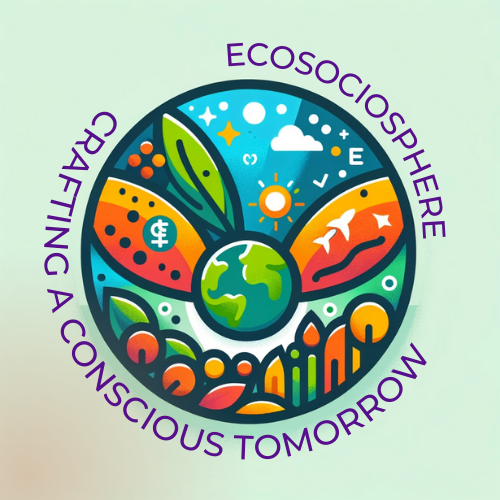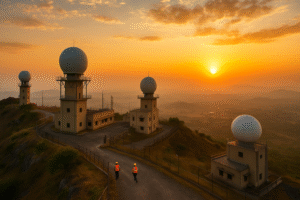Fun fact: Just two minutes of staring at something awe-inspiring—like the night sky—can lower your heart rate and reduce stress hormones.
It’s a feeling we’ve all experienced: that sudden intake of breath when you see a waterfall crash into a canyon, hear a powerful symphony, or look up at a starlit sky. Goosebumps. A lump in your throat. Time was briefly suspended. That, my friend, is awe.
In our fast-scrolling, productivity-obsessed lives, awe might feel like a luxury. But science is now proving that it’s a biological necessity. “The Neuroscience of Awe: Why Wonder Is Good for You” isn’t just a poetic idea—it’s a scientific truth backed by magnetic resonance imaging (MRI) scans, hormone levels, and psychological studies.
Let’s explore how awe shapes the brain, soothes the body, and reconnects us with something we’re increasingly missing: the humbling, healing power of wonder.
What Is Awe, Really?
Awe is a complex emotion triggered when we encounter something vast and beyond our current understanding—something that challenges the way we see the world.
Unlike joy or pride, awe requires mental expansion. You don’t just feel good; you rethink what’s possible. It often comes with a sense of “small self,” which is a fancy way of saying: you feel humbled.
Examples include:
- Watching a baby being born
- Perched on the brink of a towering mountain ledge
- Listening to a soul-stirring piece of music
- Witnessing acts of profound courage or kindness
Awe is not limited to temples, telescopes, or TED Talks. It can happen in your backyard, at your local museum, or during a perfectly silent sunrise. And it turns out, this fleeting feeling leaves a lasting impact.
Your Brain on Awe
So what happens in the brain when awe strikes?
Researchers using functional Magnetic Resonance Imaging (fMRI) have found that awe reduces activity in the default mode network (DMN)—the part of the brain linked to ego, rumination, and self-referential thoughts. In other words, awe quiets your inner monologue.
At the same time, awe activates the prefrontal cortex, which is involved in attention and decision-making, and the insula, linked to emotional awareness. This cocktail of neural responses makes you more open, present, and aware.
One study from the University of California, Berkeley, found that people who regularly experience awe have lower levels of interleukin-6, a marker of inflammation. Translation: Awe is literally anti-inflammatory.
Awe and the Body: More Than Just a Feeling
Awe doesn’t just transform the mind—it heals the body.
- Stress Reduction: Awe triggers the parasympathetic nervous system, lowering cortisol (the stress hormone).
- Heart Health: A 2015 study published in Emotion found that people who feel awe more often have lower resting heart rates.
- Immune Boost: Experiences of awe may enhance immune function by calming inflammation and supporting the body’s natural defences.
This means awe isn’t just an emotional high—it’s a form of biological recalibration. Like a reset button for your overworked system.

Awe Makes You Kinder (and Less Selfish)
Feeling small can make you act big—toward others.
Studies show that awe increases prosocial behaviours: generosity, empathy, and cooperation. People exposed to awe-inspiring scenes are more likely to help a stranger, share resources, or donate to charity.
Why? Because awe shrinks the ego. It reminds you that you’re part of something bigger—whether that’s humanity, nature, or the cosmos. And when you stop thinking you’re the centre of the universe, you start behaving like a better neighbour in it.
The “Awe Walk” Experiment
In a fascinating study at the University of California, San Francisco (UCSF), older adults were asked to take a 15-minute walk once a week. Half of them were told to “look for things that delight or surprise you.”
The results?
The awe-walkers reported greater joy, less anxiety, and even more social connection. Remarkably, selfies taken during their walks showed more open body language and bigger, more authentic smiles.
That’s the power of a little wonder—on your block, no mountain required.
Nature: The Ultimate Awe Machine
From the monsoon thunderclap to the gentle bloom of a lotus, nature is a masterclass in awe.
Spending time in natural environments not only enhances awe but also increases heart rate variability (HRV)—a marker of emotional regulation and resilience. That’s why Japanese Shinrin-yoku (forest bathing) is now a medically recognised therapy.
Even just watching a 3-minute video of waterfalls, outer space, or wildlife can create measurable shifts in mood and physiology.
Pro tip: You don’t need to travel far. A tree canopy, a riverbank, even the intricate wings of a butterfly, can stir awe if you slow down enough to notice.
Arts and Music: Awe in the Abstract
Ever cried during a concert? Felt chills while reading poetry? That’s awe in another form—aesthetic awe.
Music, visual arts, and literature trigger awe through structure, rhythm, and symbolism. A great painting or a powerful raga doesn’t just impress—it elevates. It transports you beyond logic into pure emotion.
And guess what? The neurological response is almost identical to awe in nature. That’s why museums and concert halls are increasingly seen as spaces of mental well-being, not just cultural consumption.
Awe Is Good for Society
In a world fractured by polarisation and “us vs. them” thinking, awe might be the emotional glue we need.
Social scientists argue that awe reduces entitlement and promotes a sense of collective identity. When people see the Earth from space (known as the Overview Effect), they often report a deep shift in values—less materialism, more altruism, and a heightened sense of unity.
Imagine if we made awe a public health strategy. What if cities built more skywalks, gardens, public art, and observatories? What if schools taught students not just facts, but how to wonder?
Conclusion: Don’t Just Look—Let It In
Here’s the truth: awe is all around us. But we’ve become experts at tuning it out. We scroll past sunsets. We rush through concerts. We avoid eye contact with the miraculous.
The neuroscience of awe tells us that wonder isn’t just an escape—it’s an upgrade. It resets our brain, softens our ego, and connects us more deeply to the world and to each other.
So go ahead. Step outside. Stare at the stars. Listen to the monsoon. Let your breath catch. Let your heart swell.
Because awe isn’t a distraction from life—it’s what makes life worth living.
Author’s Note
In a culture obsessed with productivity and certainty, awe reminds us to pause, to feel, and to belong. You don’t need a mountain or a miracle—just a moment. And maybe, the willingness to be amazed.
G.C., Ecosociosphere contributor.
References and Further Reading
- Greater Good Science Center – The Science of Awe
- The Neuroscience of Awe – NIH
- Do We Really Use Only 10 Percent of Our Brains? – Topic Universe. https://topicuniverse.com/do-we-really-use-only-10-percent-of-our-brains/
- KA-EMDR | University Park Counseling & Testing Center, PLLC. https://www.universityparkcounseling.com/ka-emdr
- Cassarino, M., & Murphy, G. (2018). Reducing young drivers’ crash risk: Are we there yet? An ecological systems-based review of the last decade of research. Transportation Research Part F Traffic Psychology and Behaviour. https://doi.org/10.1016/j.trf.2018.04.003
- Why Adventure Travel Is the New Therapy You Didn’t Know You Needed. https://coffeebrewingmastery.com/2024/May/adventure-travel-therapy-benefits




